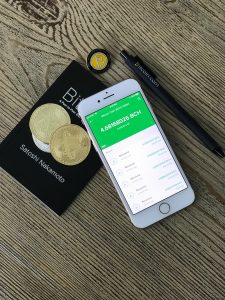The forex market is notorious for its volatility, making it a popular choice for traders looking to make quick profits from price swings. However, this volatility can also make it difficult to predict market movements and stay on top of trading opportunities. One solution to this problem is to be notified when forex volatility increases, allowing traders to adjust their strategies accordingly. In this article, we will explore some of the ways to be notified when forex volatility increases.
1. Use Volatility Indicators
One of the easiest ways to be notified when forex volatility increases is to use volatility indicators. These are technical indicators that measure the degree of price movement in a particular currency pair over a given period of time. The most popular volatility indicators include the Average True Range (ATR), Bollinger Bands, and the Chaikin Volatility Indicator.
The ATR is a simple indicator that measures the average range of price movement over a specified period. When volatility increases, the ATR will rise, indicating that prices are moving further from their average. Similarly, Bollinger Bands use a moving average and standard deviation to create an upper and lower band around prices. When prices move beyond these bands, it suggests increased volatility.
The Chaikin Volatility Indicator is a more complex indicator that combines price and volume data to measure market volatility. When the indicator rises, it suggests that volatility is increasing, while a decline indicates lower volatility.
2. Use Economic Calendars
Forex volatility is often linked to economic events and news releases, which can cause sudden price movements. Economic calendars provide a schedule of upcoming events and their expected impact on the market, giving traders a heads-up on potential volatility spikes.
Most economic calendars also provide notifications, either via email or mobile app, when an event is about to take place. This allows traders to prepare for potential market movements and adjust their trading strategies accordingly.
3. Use Price Alerts
Price alerts are another useful tool for staying on top of market volatility. These are notifications that are triggered when a particular price level is reached, allowing traders to react quickly to changes in the market.
Many trading platforms and charting tools offer price alert features, allowing traders to set alerts for specific currency pairs and price levels. This can be particularly useful for traders who are not able to constantly monitor the markets, as alerts can be sent via email or mobile app.
4. Use Sentiment Indicators
Forex market sentiment is the overall attitude of traders towards a particular currency pair. When sentiment is positive, traders are bullish on the currency, while negative sentiment suggests a bearish outlook. Sentiment indicators track and analyze the opinions and actions of traders, providing insights into market sentiment and potential price movements.
The most popular sentiment indicators include the Commitment of Traders (COT) report, which tracks the positions of large institutional traders, and the Speculative Sentiment Index (SSI), which measures the positions of retail traders.
By monitoring sentiment indicators, traders can be alerted to potential changes in market sentiment and adjust their trading strategies accordingly.
Conclusion
Forex market volatility can be both a blessing and a curse for traders. While it provides opportunities for profit, it can also make it difficult to predict market movements and stay on top of trading opportunities. By using a combination of volatility indicators, economic calendars, price alerts, and sentiment indicators, traders can be notified when volatility increases and adjust their strategies accordingly. This can help to minimize risk and increase profitability in the forex market.





